Devinder Kaur
A Bayesian Deep Learning Technique for Multi-Step Ahead Solar Generation Forecasting
Mar 21, 2022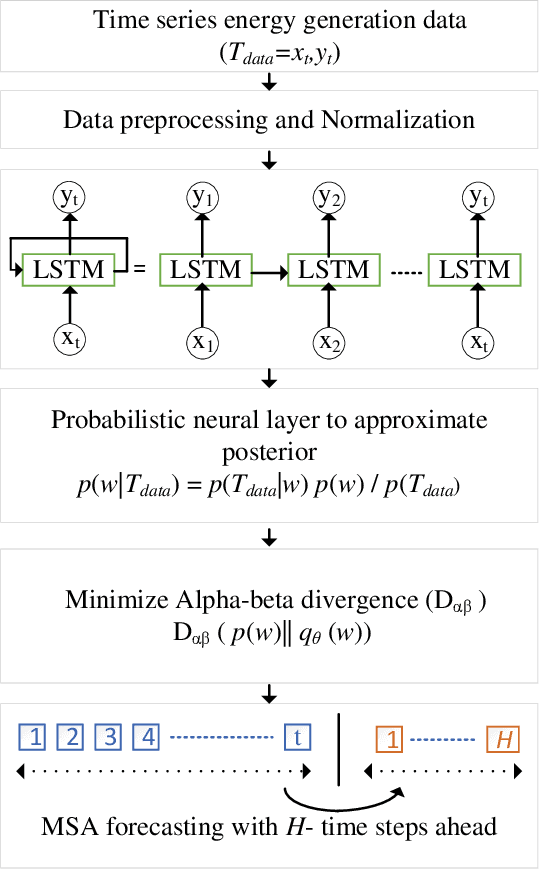
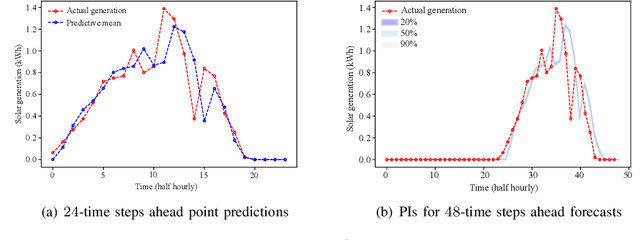


Abstract:In this paper, we propose an improved Bayesian bidirectional long-short term memory (BiLSTM) neural networks for multi-step ahead (MSA) solar generation forecasting. The proposed technique applies alpha-beta divergence for a more appropriate consideration of outliers in the solar generation data and resulting variability of the weight parameter distribution in the neural network. The proposed method is examined on highly granular solar generation data from Ausgrid using probabilistic evaluation metrics such as Pinball loss and Winkler score. Moreover, a comparative analysis between MSA and the single-step ahead (SSA) forecasting is provided to test the effectiveness of the proposed method on variable forecasting horizons. The numerical results clearly demonstrate that the proposed Bayesian BiLSTM with alpha-beta divergence outperforms standard Bayesian BiLSTM and other benchmark methods for MSA forecasting in terms of error performance.
A VAE-Based Bayesian Bidirectional LSTM for Renewable Energy Forecasting
Mar 24, 2021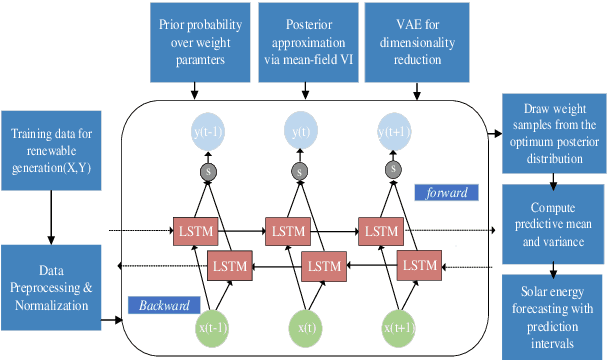

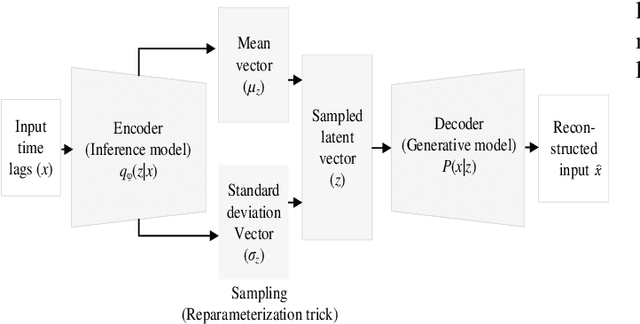
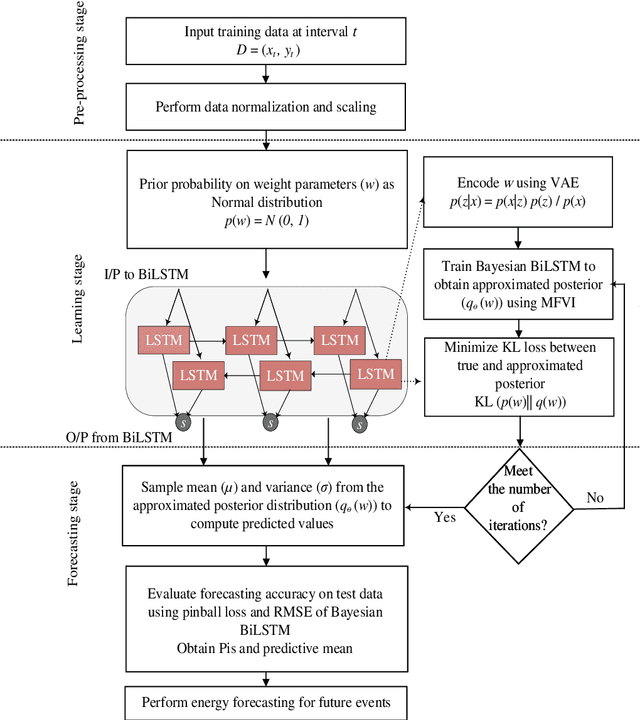
Abstract:The advancement in distributed generation technologies in modern power systems has led to a widespread integration of renewable power generation at customer side. However, the intermittent nature of renewable energy pose new challenges to the network operational planning with underlying uncertainties. This paper proposes a novel Bayesian probabilistic technique for forecasting renewable power generation by addressing data and model uncertainties by integrating bidirectional long short-term memory (BiLSTM) neural networks while compressing the weight parameters using variational autoencoder (VAE). Existing Bayesian deep learning methods suffer from high computational complexities as they require to draw a large number of samples from weight parameters expressed in the form of probability distributions. The proposed method can deal with uncertainty present in model and data in a more computationally efficient manner by reducing the dimensionality of model parameters. The proposed method is evaluated using pinball loss, reconstruction error, and other forecasting evaluation metrics. It is inferred from the numerical results that VAE-Bayesian BiLSTM outperforms other probabilistic deep learning methods in terms of forecasting accuracy and computational efficiency for different sizes of the dataset.
Energy Forecasting in Smart Grid Systems: A Review of the State-of-the-art Techniques
Nov 25, 2020

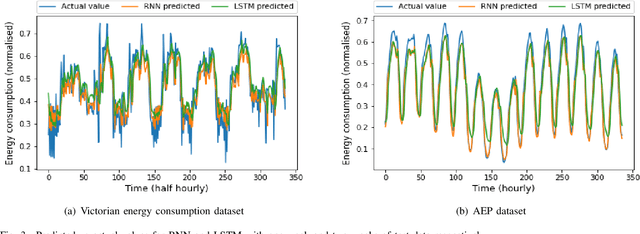

Abstract:Energy forecasting has a vital role to play in smart grid (SG) systems involving various applications such as demand-side management, load shedding, optimum dispatch, etc. Managing efficient forecasting while ensuring the least possible prediction error is one of the main challenges posed in the grid today, considering the uncertainty and granularity in the SG data. This paper presents a comprehensive and application-oriented review of state-of-the-art forecasting methods for SG systems considering the different models and architectures. Traditional statistical and machine learning-based forecasting methods are extensively investigated in terms of their applicability to energy forecasting. In addition, the significance of hybrid methods and data pre-processing techniques for better forecasting accuracy is also highlighted. A comparative case study using the Victorian electricity consumption benchmark and American electric power (AEP) datasets is conducted to analyze the performance of different forecasting methods. The analysis demonstrates higher accuracy of the recurrent neural network (RNN) and long-short term memory (LSTM) methods when sample sizes are larger and hyperparameters are appropriately tuned. Furthermore, hybrid methods such as CNN-LSTM are also highly effective to deal with long sequences in energy data.
How Santa Fe Ants Evolve
Feb 07, 2014



Abstract:The Santa Fe Ant model problem has been extensively used to investigate, test and evaluate Evolutionary Computing systems and methods over the past two decades. There is however no literature on its program structures that are systematically used for fitness improvement, the geometries of those structures and their dynamics during optimization. This paper analyzes the Santa Fe Ant Problem using a new phenotypic schema and landscape analysis based on executed instruction sequences. For the first time we detail systematic structural features that give high fitness and the evolutionary dynamics of such structures. The new schema avoids variances due to introns. We develop a phenotypic variation method that tests the new understanding of the landscape. We also develop a modified function set that tests newly identified synchronization constraints. We obtain favorable computational efforts compared to those in the literature, on testing the new variation and function set on both the Santa Fe Trail, and the more computationally demanding Los Altos Trail. Our findings suggest that for the Santa Fe Ant problem, a perspective of program assembly from repetition of highly fit responses to trail conditions leads to better analysis and performance.
 Add to Chrome
Add to Chrome Add to Firefox
Add to Firefox Add to Edge
Add to Edge